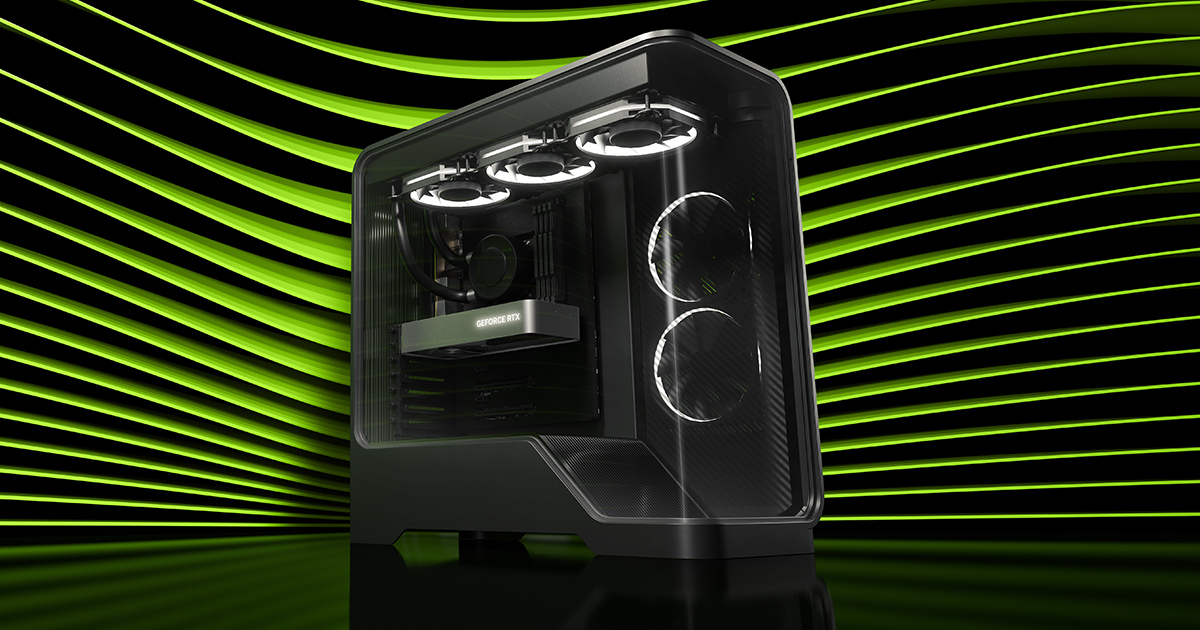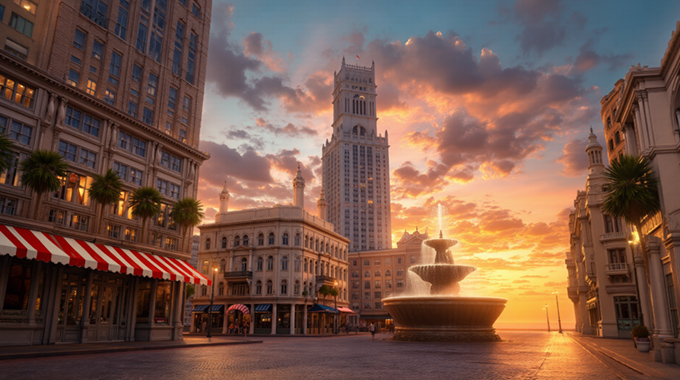Additionally, Chaos Vantage now includes NVIDIA DLSS 4, D5 Render gains Multi Frame Generation, and NVIDIA Blackwell support in Maxon Redshift ramps up performance by 30%.
The NVIDIA GeForce RTX 5070 Ti graphics cards, powered by the cutting-edge Blackwell architecture, are here and primed to turbocharge generative AI and creative workflows.
These GPUs pack fifth-generation Tensor Cores with FP4 support, doubling performance and slashing VRAM needs for running generative AI models. They also feature two ninth-generation encoders and a sixth-generation decoder, bringing 4:2:2 pro-grade color format support and enhanced HEVC and AV1 encoding quality. This setup speeds up video editing, cutting export times by 8x compared to single-encoder cards like the GeForce RTX 3090 without 4:2:2 support.
With 16GB of zippy GDDR7 memory and 896 GB/sec of bandwidth—a 78% jump over the RTX 4070 Ti—the RTX 5070 Ti is a powerhouse.

It’s a total game-changer. NVIDIA DLSS 4, an AI-driven neural rendering suite that boosts frame rates and sharpens visuals, now enhances pro 3D tools like Chaos Vantage. D5 Render’s beta adds DLSS 4 with Multi Frame Generation, tripling frame rates, while Maxon Redshift taps Blackwell support for a 30% performance lift.
The February NVIDIA Studio Driver, tailored for the RTX 5070 Ti, drops next week. For instant updates, grab the NVIDIA app.
Snag an RTX 5070 Ti or a prebuilt system via NVIDIA’s product finder—check after 6 a.m. PT as retailers update stock. Dive into full specs too.
Geared for the Generative AI Age
Black Forest Lab’s FP4-optimized FLUX.1 [dev] image generation models are live on Hugging Face. FP4 shrinks model sizes like compression, with FLUX.1 [dev] needing under 10GB of VRAM versus 23GB+ at FP16. That means it runs smoothly on the RTX 5070 Ti and all RTX 50 Series GPUs—key since FP16 would choke on memory limits. On the RTX 5070 Ti, FLUX.1 [dev] whips up images in just over eight seconds at FP4, beating 20 seconds at FP8 on the RTX 4070 Ti.
Smooth Viewports
DLSS 4 hits Chaos Vantage and D5 Render (beta), favorites among architects, animators, and designers. Both apps leverage DLSS 4’s upgraded Super Resolution and Ray Reconstruction—fueled by transformers—for sharper details and steadier visuals. D5 Render’s Multi Frame Generation uses AI to craft up to three frames per traditional one, letting animators glide through huge scenes at 60+ fps.
Maxon Redshift, a GPU-accelerated 3D rendering tool for models, scenes, and animations, just updated to fully tap RTX 50 Series power, boosting performance by up to 30%.

